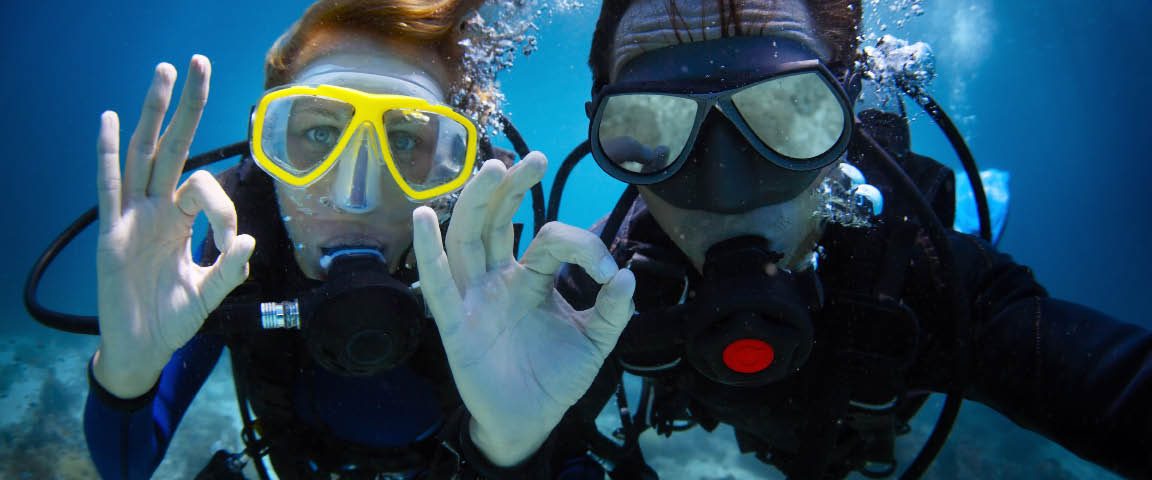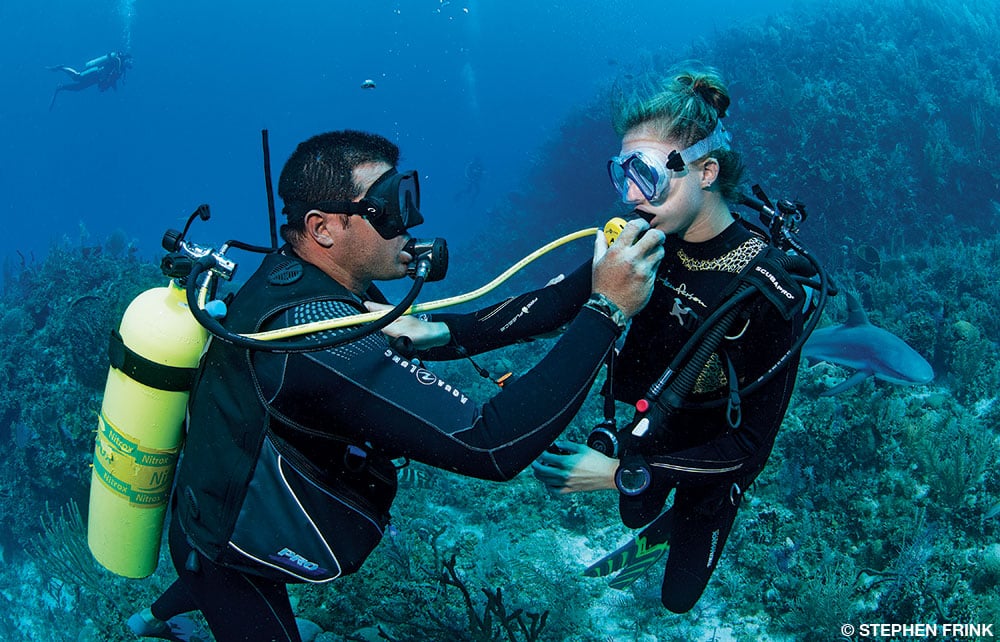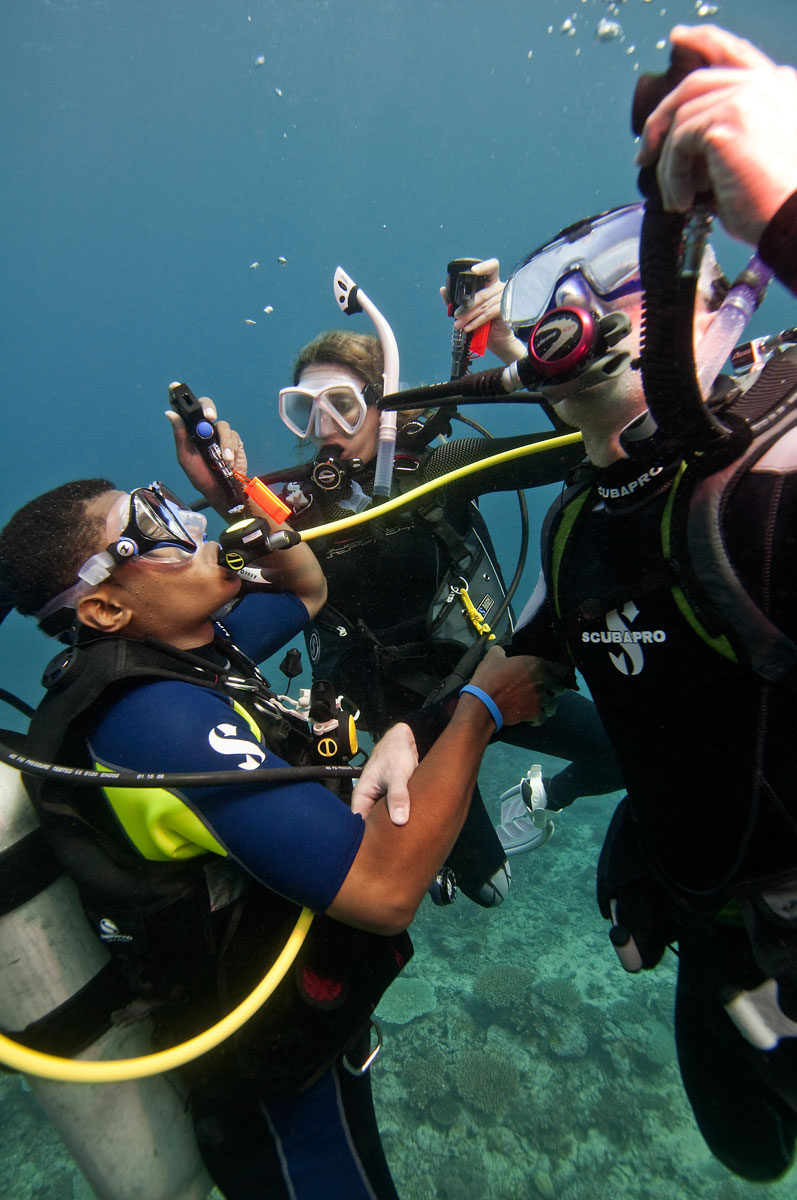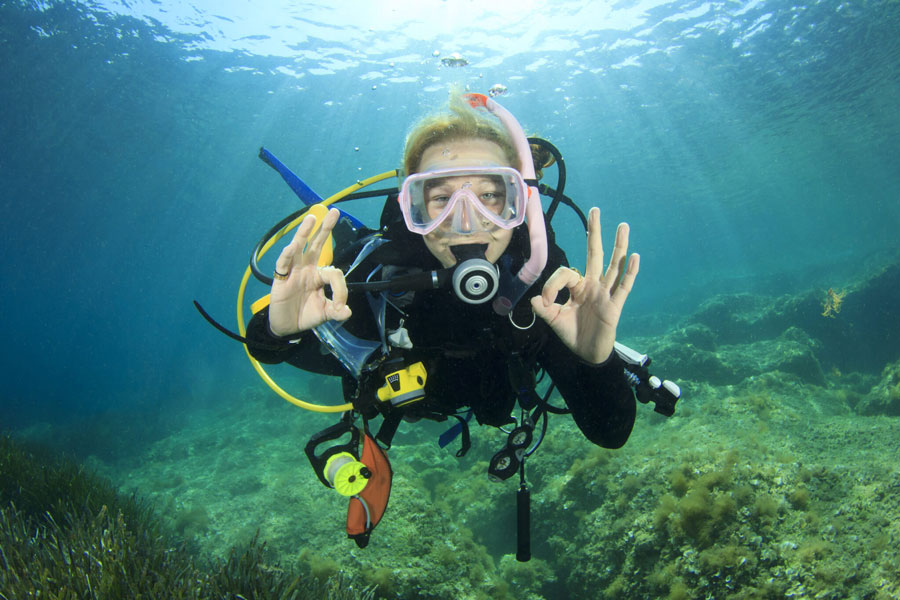- INTERNATIONAL CONFIGURATION.
This configuration is the most common and you will find it if you rent your scuba gear with Dressel Divers. In this case, the primary diving regulator measures about 75cm / 29.53 in. long and the secondary second stage regulator or “octopus” 100cm / 39.37 in. You will recognize it because its hose is yellow. Therefore, the octopus will be the regulator you give to your dive buddy.
As it is a standardized configuration, everyone has used it on some occasions or, at least, it is known by the majority of divers and this is an advantage. However, there are some drawbacks as well. For instance, the donor diver has to spend some time looking for the octopus because it is not possible to know where it is exactly. Also, at the worst, the second regulator can suffer unnoticed damage during diving because it is hanging alongside the body and out of sight.
- EXTRA DIVING REGULATOR INTEGRATED INTO THE BCD.
This configuration is integrated with the BCD inflator valve with the second stage regulator using the same hose.
The donor will undoubtedly know exactly where to find it, but he will have to offer the primary regulator to his buddy and he will use the inflator integrated octopus. This happens because the octopus’ hose is very short.
In addition, you will have to deal with the discomfort generated by having the buoyancy control BCD inflator knobs near the mouth and in such an unusual position.
- HOGARTIAN CONFIGURATION.
This configuration is preferred by those divers who transcend the limits of recreational diving and choose technical diving’s more demanding environments.
It is characterized by having a very long hose for the main second stage diving regulator. The hose measures around 200cm / 78.74 in. that the diver passes around his neck. The secondary second stage regulator measures 55 cm / 21.65 in. and hangs on the diver’s neck as if it were a necklace.







